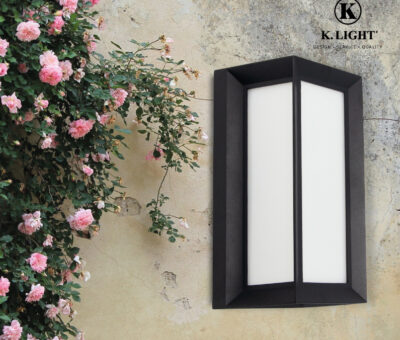The Lighting Warehouse: Kitchen Lighting Design Tips
Like all lighting throughout the home, kitchen lighting has come a long way since the single-light-per-room days, and has evolved into a feature that can make or break a space.
Says Melissa Davidson from leading lighting supplier, The Lighting Warehouse: “In the past, kitchen lighting comprised a single fluorescent light that was slapped up in the middle of the room’s ceiling, and that was that. Today, however, as the kitchen moves away from being a mere utilitarian space, to being more of a living space that is often part of an open-plan composition, good lighting design has become a must-have for any well dressed kitchen.”
She notes that any good kitchen lighting design will comprise various layers: “You need to create layers of light to make your kitchen feel warm and welcoming, while also providing functional task lighting and highlighting various accents for an attractive overall aesthetic.” She provides an outline of the various different types of lighting that can be used in this space:
Downlighters: Downlighters can be used to great effect in your kitchen space, says Melissa: “Downlighters are an inexpensive, neat and elegant way of introducing both ambient and task lighting into your kitchen. Nowadays instead of installing halogen downlighters, which consume lots of electricity and emit quite a lot of heat, LED downlighters are highly energy efficient and emit virtually no heat at all.
Over-cabinet lighting: This kind of lighting is more about aesthetics than function, explains Melissa: “Over-cabinet lighting is a way of creating the illusion of added height in the room, which makes the space seem larger and airier than it actually is. You can mount these lights directly on top of your cabinetry, where they can be positioned to illuminate displays and spread a warm and inviting light on the walls and ceiling above.” When choosing light fittings for this kind of lighting, it is imperative that you choose lights that do not get hot, as this could damage the cabinetry and pose a fire risk – such as LEDs for example. Types of over-cabinet lighting include: LED channel lights, LED under-cabinet or slimline fittings, or LED striplighting.
Under-cabinet lights: In days gone by, under-cabinet lighting was considered a real luxury. However, today, it is a kitchen essential – offering an excellent source of task lighting above your countertops. Says Melissa: “To get the installation of under-cabinet lighting right, you need to hide the lights behind the edge of the wall cabinets, so you only see the light, and not the fixture. For task lighting, the fixture needs to be positioned within the first third of the cabinet, whereas, if you would like to highlight a beautiful backsplash, then it is best to position the fixture at the back of the cabinet, where it meets the wall behind.” She notes that LED under-cabinet or slimline fittings, as well as LED striplights are both a great source of under-cabinet lighting.
Kickboard lighting: Adding lighting to the kickboards at the base of your cabinets can add a whole other dimension to your kitchen design. Melissa elaborates: “You can hide LED strip lights on top of your base cabinets’ kickboards. Why not connect them to a motion or occupancy sensor, which will switch these lights on whenever you walk into the kitchen – allowing you to use them as nightlights. Alternatively, keep the striplights on the main switch to add another layer of light for added texture and appeal to you overall lighting design.”
Ceiling lights: LED channel lights have replaced fluorescent fittings in the kitchen – they are extremely energy efficient, provide a very high illumination, have a slim design and are maintenance-free as the LEDs are built-in. The latest models even have built-in occupancy sensors, which are just perfect for the pantry, scullery or laundry areas located just off your kitchen space.
Pendants or Chandeliers: Pendants or chandeliers are great for general or ambient lighting, and can provide visual interest – standing as a focal feature in the overall kitchen composition. Melissa advises: “When selecting these decorative lights for your kitchen, be sure to choose units that throw light in all directions in order to enhance the overall ambient lighting within the room. Alternatively, pick one with a shade that directs light down to create task lighting, especially if it is positioned over an island. Bar pendants are perfect for this application. You can select smaller pendants that can be installed next to one another for a more open feel and to distinguish the living space from the kitchen area, or you can choose bigger, heavier fittings to make a decorative statement.”
For kitchen lighting, you can browse the different categories of lighting available from The Lighting Warehouse.
You might also like...
-
Designing For Mood: How Lighting Transforms Room Vibes

In the realm of interior design, lighting does more than ensure visibility—it stands as an art, a science, and a powerful tool in influencing mood. ...
-
K Light: Take Your Outdoor Lighting Up A Notch

Summer is calling and we’re excited to spruce up our outdoor areas. Good outdoor lighting is a must to give your home added ambience and ...
-
The Rainha Crystal Range from The Lighting Warehouse

The Rainha crystal range from The Lighting Warehouse stands as a beacon of timeless elegance and old-world charm. Drawing inspiration from the grandeur of Vienna’s ...
-
Eurolux: Festive Lighting Done Right

The festive season is upon us, offering a perfect opportunity for celebration. Whether you’re gearing up for Diwali, Christmas, Hanukkah, or any special occasion, adorning ...






























